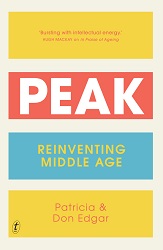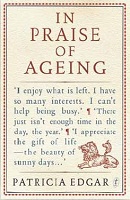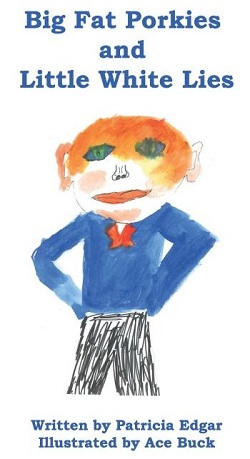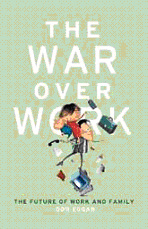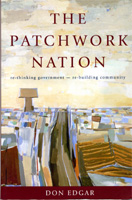The age-old debate on generational conflict is deeply flawed
By Don Edgar and Patricia Edgar
Nov 3, 2021

Every generation deserves the best chance in life, but achieving this has been undermined by government policy failure and misplaced claims of advantage.
The evidence for repeated assertions that older generations are failing in their duty to ensure an equally fair pathway through life for younger generations is patchy at best. The conflict assertion has been media-driven into mythological status which hinders rational debate and more nuanced policymaking within what is an ageing Australian society. It is an insidious form of ageism.
Treasury's intergenerational reports have not helped, based on varying estimates of population growth and a negative view of ageing. In fact, we are more a middle-ageing society than an ageing one, with some 5 million people reaching the middle years of 50-75 still healthy, active and productive. Other countries with a truly ageing society ? Japan, Italy, and Finland for example ? have developed positive approaches which seek to re-link the generations rather than set them apart and which draw on the strengths of both old and young to better integrate and foster social cohesion.
Philosopher John Rawls frames the issue in terms of social justice: ensuring that decisions made now do not unfairly disadvantage the life chances of future generations. Australia's intergenerational reports have been based on this principle of equity but they ignore inequities based on social class, gender and ethnicity, instead focusing on the "burden" of older people through rising dependency ratios, health costs and future debt. Each of these issues is misconstrued, ignoring the significant discrepancies within each cohort and assuming homogeneity of "advantage" within the Baby Boomer generation. Couching the discussion in these terms shrouds a history of government policy failure and neglect.
First, what do we mean by a generation and what are their obligations to one another? The small "g" version concerns parents and their children, but much of the conflict debate refers to larger cohorts such as the huge bump of post-war (1946-66) Boomers or the much smaller "more rebellious" cohorts of Gen X (born 1966-80) and Millennials (1981-96) born on the cusp of a new century into a rapidly changing, technologically driven world, representing one supposedly uniform generation.
There is no logical reason to expect one cohort to experience the same life stages, at the same ages, as did previous cohorts. Times change. Wars and other crises intervene. Values and life choices evolve, particularly now that life expectancy has increased by more than 30 years across a single long-life span. The COVID-19 pandemic has already altered our projected futures.
Nor is there any logic in expecting younger generations to have the same level of wealth as older Baby Boomers at the same stage. Wealth accumulates over time, so the issue is rather whether (because of education debt, rising house prices and slow wage growth) the young are being locked out of ever achieving levels of wealth comparable to that of previous generations. We need to ask: what is a desirable goal? Is constant growth desirable? And what legacy of equitable life chances was left for young people after the Great Depression and two world wars?
Most obviously, not everyone born within those broad periods experienced life in the same way. Male Boomers enjoyed huge advantages over their female counterparts, only some of whom broke the pattern and stayed in the paid workforce. Social class status explains more than relative age.
While in the post-war reconstruction years jobs were readily available and one income was often enough to move into home ownership, seen as a lifetime commitment, not all were able to get a loan and pay off a mortgage with what were then very high interest rates. Only one in five Boomers owned their own home by the time they were in the key family formation years. The intra-group differences are obscured by sweeping assertions about one generation versus another.
Talk of a rising "dependency ratio", with the employed young (working age defined as 15-65) "carrying the burden" of a rising number of "old" dependants, ignores the fact that only 54 per cent of total government revenue comes from personal income tax (the rest is from corporate taxes, excise and GST, all of which could be increased). Increasing numbers of people over 65 are still employed and paying income tax. In our federal and state budgets, more is spent on dependent children than on old people and there is a growing "longevity dividend" to be reaped by encouraging more of the old to continue working.
Intergenerational conflict is an abstraction. Intra-family transfers are growing, not declining. The census shows one in five Australian households is multi-generational. In 2016, some 43 per cent of 20-24 year-olds were still living at home with parents, as were 17 per cent of 25-29 year olds. Who is supporting who in these intergenerational households? Conflict is more likely to be personal than economic, when young adults bring unwed partners into the family home, or parents wish the "empty nest" stage of their life would come sooner.
Much of the discussion about inequity focuses on university fees, housing costs, rising health costs and the increasing dilemma of caring for the frail aged. The move to mass higher education brought with it reduced government funding, fewer scholarships and exorbitant HECS/HELP fees which burden young people today. Until their debts are paid off, they can't save for a housing deposit or even get a bank loan. On the positive side, the new higher education policy opened up entry to higher education for many more young people than in the Boomer era. In fact, only 21 per cent of the Boomer generation got a "free" university education.
Rising costs of aged care can be disputed too. Certainly, the numbers of old people will increase with lower birth rates and reduced immigration quotas. The 2021 intergenerational report shows average health spending on people over 85 was three times the average for all ages, but it also acknowledges that non-demographic factors, such as rising incomes and technological advances in healthcare, drive government health spending more than population ageing. And though aged care spending has increased 40 per cent since 2012-13, the numbers in residential aged care have remained low and stable. The recent royal commission rightly highlighted widespread neglect and abuse, calling for better quality care and more funding for home care packages, preferred by most to retain some independence. Note too that people over 65 are ineligible for support from the NDIS scheme.
We have examined the data on these issues in a report for NARI (the National Ageing Research Institute), " Our intergenerational future: Cooperation not conflict ".
It is every government's role to ensure that tax systems operate equitably, regardless of age, and that citizens of every generation are offered the best chance in life to thrive. Increased national debt may be called a "burden", but most of that expenditure is an investment in the future for both old and young. Additionally, the damage caused by climate change will continue to affect us all.
We need to challenge assertions of generational conflict, recognise that ageing is everyone's future, and devise more positive ways to engage each generation in mutually supportive exchange.



